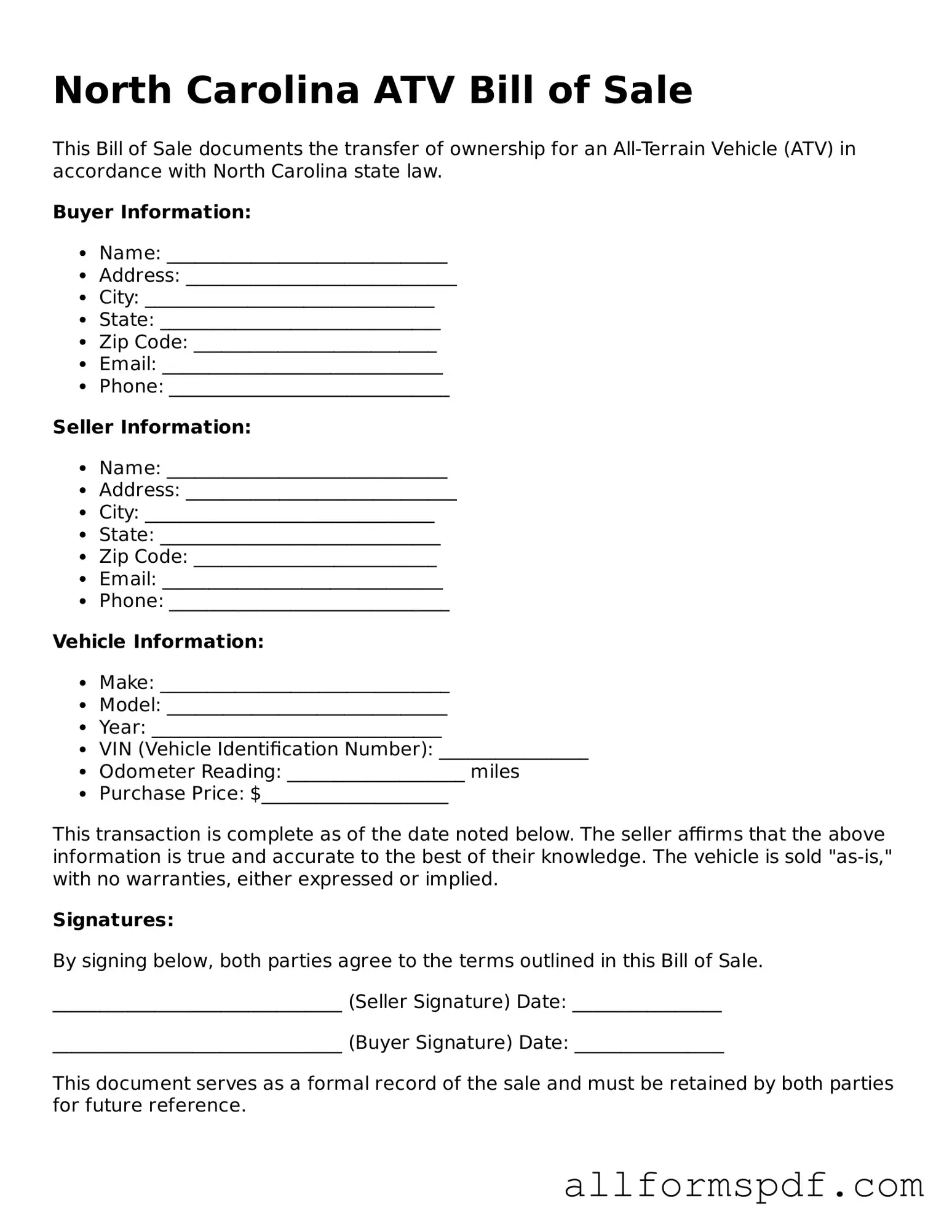Filling out the North Carolina ATV Bill of Sale form can be straightforward, but many people make common mistakes that can lead to complications. One frequent error is failing to include the correct date of the transaction. This date is crucial as it establishes the timeline for ownership transfer. Without it, disputes may arise regarding when the sale took place.
Another common mistake is not providing accurate vehicle information. Sellers often overlook details like the Vehicle Identification Number (VIN) or the make and model of the ATV. Incomplete or incorrect information can create issues for both the buyer and seller, especially if the buyer needs to register the vehicle later.
Many individuals also forget to include the purchase price. This figure is essential for legal and tax purposes. Omitting it can lead to complications when the buyer attempts to register the ATV or if there are questions about the transaction down the line.
Some people mistakenly think that a signature from only one party is sufficient. Both the seller and the buyer must sign the Bill of Sale to validate the transaction. Without both signatures, the document may not hold up in a dispute or when registering the ATV.
Another error involves not providing the correct contact information for both parties. This information is vital for future correspondence, especially if there are any issues with the ATV after the sale. Missing contact details can complicate communication between the buyer and seller.
In addition, failing to provide a clear description of any included accessories or equipment is a mistake many make. If the ATV comes with additional items like helmets or trailers, these should be listed explicitly. Otherwise, misunderstandings may arise regarding what was included in the sale.
Some individuals neglect to check local regulations regarding the sale of ATVs. Each county or municipality may have specific requirements for Bill of Sale documents. Ignoring these can lead to legal challenges or fines.
People often forget to make copies of the completed Bill of Sale for their records. Keeping a copy is essential for both the buyer and seller. It serves as proof of the transaction and can be useful for future reference.
Another mistake is not having the document notarized when required. While not always necessary, notarization can provide an extra layer of protection for both parties. It helps to verify the identities of the individuals involved in the transaction.
Finally, many individuals do not review the completed form for errors before submission. Simple typos or inaccuracies can cause significant issues later on. Taking the time to double-check the form can save both parties from future headaches.
